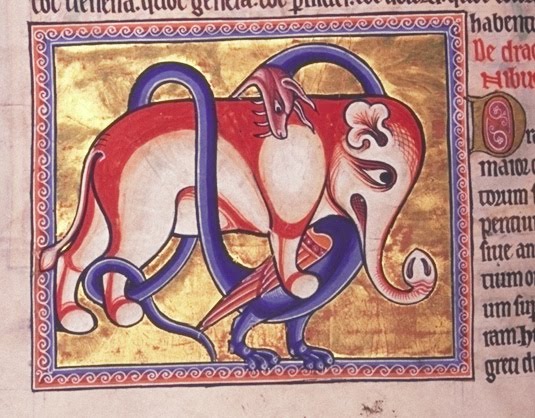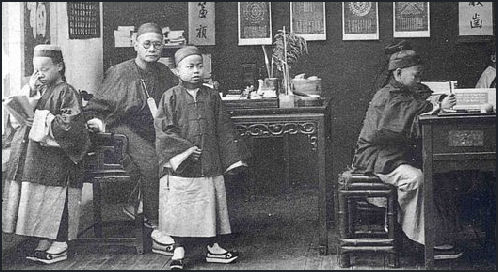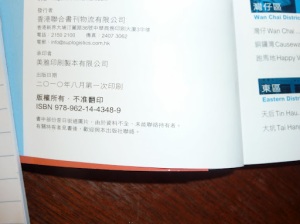 The University of Hong Kong organised another great event: Enhancing intellectual property protection in Greater China: Contemporary Issues and Critical Analysis.
The University of Hong Kong organised another great event: Enhancing intellectual property protection in Greater China: Contemporary Issues and Critical Analysis.
By some the agreements, although non-binding, are seen as a Trojan horse, that will further incorporate Taiwan into “Greater China”.
Professor Liu spoke about two agreements that were signed June 29, 2010:
– Economic Cooperation Framework Agreement (ECFA) 兩岸經濟合作架構協議(定);
– Cross-Strait Cooperation Agreement on Intellectual Property Rights (IPR) Protection.
Both agreements came into effect September 12, 2010.
Chapter 3 of
EFTA is entitled Economic Cooperation
Article 6 Economic Cooperation
1. To enhance and expand the benefits of this Agreement, the two Parties have agreed to strengthen cooperation in areas including, but not limited to, the following:
(1) intellectual property rights protection and cooperation;
(2) financial cooperation;
(3) trade promotion and facilitation;
(4) customs cooperation;
(5) e-commerce cooperation;
(6) discussion on the overall arrangements and key areas for industrial cooperation, promotion of cooperation in major projects, and coordination of the resolution of issues that may arise in the course of industrial cooperation between the two Parties;
(7) promotion of small and medium-sized enterprises cooperation between the two Parties, and enhancement of the competitiveness of these enterprises;
(8) promotion of the mutual establishment of offices by economic and trade bodies of the two Parties.
2. The two Parties shall expeditiously conduct consultations on the specific programs and contents of the cooperation matters listed in this Article.

Professor Liu gave an overview of the relations between Taiwan and China and the growing importance of the trade between the two. Professor Liu: “Taiwan and China developed differently; in Taiwan the state has become a neutral arbitrator for business, not a player in the economy as is the case in China.”
Another difference professor Liu points out is that the Taiwan Intellectual Property Organisation (TIPO) is a single and unified organisation for the protection and enforcement of intellectual property in contrast to China that has a complex and convoluted system of many organisations (SIPO, SAIC, NCAC, AQSIQ, GAC and many many more).
The political problems between the two sides across the Taiwan Strait cause also problems related to property protection in China which have to be tackled with a separate agreement on IPRs: Cross-Strait Cooperation Agreement on Intellectual Property Rights (IPR) Protection, which you can find on the site of Tsai, Lee & Chen
here.
– (I) Coordination target
– (II) Priority rights; Taiwanese companies had trouble getting their patents granted in China, because when they tried to get a patent in both Taiwan and China, SIPO could reject the Chinese patent, because there was a novelty defect. So in the separate IPR agreement China will grant priority to Taiwanese applications, so that the Taiwanese application can used as first application date so that there will be no problem with novelty. There will be also priority rights for trademark rights and plant variety rights. Of course Taiwan will also grant priority rights to China.
– (III) Variety rights; Before there were no breeders rights for fruits in China, only for crops. Fruits are very important for Taiwan. There will be a consultation to expand the scope of plant varieties in China to include fruit as well.
– (IV) Examination and cooperation
– (V) Industry cooperation, in the patent and trademark industries.
– (VI) Authentication Service; copyrighted works needed to be first certified in Hong Kong. This procedure will be streamlined. If the audi0-visual products are published on the other side, copyright should be authenticated by related associations or groups appointed by the side holding the copyright. Both sides exchange opinions in connection with the establishment of the authentication system of books, computer programmes and other works. Collecting societies of both sides will have access to each others markets.
– (VII) Coordination and treatment mechanism;
1. to combat piracy and counterfeits, especially infringement online and offline.
2. to protect well-known (famous) trademarks, geographical indications or well-known names of origin places. Before some famous Taiwanese geographical names have been registered in China. Also some famous Taiwanese trademark names such as Chunghwa Telecom and Taiwan Beer cannot be registered in China, because article 10 Trademark Law of the People’s Republic of China prohibits that signs identical or similar to the state name (Chunghwa is Taiwanese spelling for Zhongguo, which means China) or a province (Taiwan is considered a province by China) as a trademark. In addition they agree to prevent cybersquatting.
3. Strengthen market supervision and crackdown of fake indications or origin places of fruits and other agricultural products.
4. Protect other IPRs (rest category).
Professor Liu said that the agreements are non-binding and that one can anticipate that it will usher in more trade agreements and agreements with binding dispute settlement procedures.
Taiwan does not need to be afraid it becomes part of China; Canada is not part of US, because of NAFTA. More trade cooperaton the better prospects for peace.
Dr. Yahong Li, University of Hong Kong: “How Patents Affect Innovation in China”
Dr. Yahong Li just finished a book called ‘
Imitation to Innovation in China: the Role of Patents in Biotechnology and Pharmaceutical Industries‘ about patent law in the pharmaceutical industry to which she wrote seven years. She spoke not only about biotech and pharma patents in China, but also about the IT and automotive industry patents in China. Dr. Li started juxtaposing research that proves that patents work to research that proves it does not. And then about patent law in developing countries. She demonstrated the enormous growth in patent filings and grants. Per industry. China might have a high tech capacity in one sector, but not necessarily in the other. Dr. Li mentioned also the Boston Consulting Group’s 5 phases of intellectual property development.
1. Driving growth through exports;
2. Climbing the value ladder;
3. Paying the price (for not protecting IPRs sufficiently);
4. Getting serious about intellectual property;
5. Profiting from intellectual property.
I have not read Dr. Li’s book yet, but I am planning to. Based on her presentation I am positive that her seven years of scholarly labour has resulted in a book that has a wealth of information about biotech and pharma patents in China.
Ms Lee raised the point that not only ignorant people violate copyright law. Well-informed publishers have joined this club.
Hong Kong has one of the strongest copyright regimes in the World. In Hong Kong there are only three categories of Fair Dealing:
Section 41 HK Copyright Ordinance: things done for instruction or for the purposes of examination.
Ms Lee points to a case that excludes a Fair Dealing defence:
The Hong Kong newspaper
Apple Daily called Ms Lee about ‘A Speaking Map of Hong Kong’ (a book with pictures and a CD that had stories with the pictures about HK), which used Wikipedia photos that were licensed under Creative Commons license. The publisher did not make any acknowledgments and thus infringed the copyrights of the photos. That the publisher apologised did not make Ms Lee much happier about the case.
To comment on the book, a copy was found in Mongkok.
Despite this case, Ms Lee still believes in the future of CC and told enthusiastically about CC’s history and the different licenses. She helped Creative Commons come to Hong Kong and port it to the Hong Kong copyright ordinance. See ‘
Creative Commons Hong Kong Launch‘.
Ms Lee asserted that there is a development that moral rights (including getting credits for your creation) become more important online then the exploitive copyright use.
She also told about the HK government’s consultation report, which recommended to make media shifting legal. However, there is still no legislation, despite the fact that its use is ubiquitous.
Professor Feng, who is the author of the excellent book ‘Intellectual Property in China’, 2nd edition, Sweet & Maxwell, 2003′, talked about the failed business strategy of publishers. Professor Feng: “All of my books are on the web. In the beginning I tried to do something about it. I have given up.”
However Professor Feng is optimistic: “Many authors in China like that their works are first published online, and then the public is getting interested. So they first serialise their books via blogs, then via hard copy. So they will get derivative rights.”
Professor Feng: If you look at the economic financial crisis, you see that Chinese companies suffered only for a short period of time. This is because Chinese companies have a much more flexible business strategy. There are not bound by legal rules, not bound by IPRs.
So in the case of the infringing Hong Kong book company, it was only one step behind companies from China. They just made one mistake; they published it in Hong kong. If they published it in China first, probably they would have great success. “
Professor Feng: “If we look back to China, growth of capitalism has not much to do with copyright. Bill Gates does not care much about IPR. Microsoft encourages copyright infringement in China, to spread the use of their software. So that indigenous innovations can be suppressed.”
According to Professor Feng business models that make use of personal relationships (read politics), free access to the content, and encouragements of infringement to suppress competition, will work in China.
Professor Feng also commented on ECFA. “It is a great framework, not mainly because of the legal aspects, but exactly because of the two sides have such great political problems. We will find a dispute business settlement system. IPR becomes frontier of cross-strait relationships.”
Haochen Sun, assistant professor of the University of Hong Kongmoderated the event with his usual wit and flexibility.




 Paul
Paul 

















































